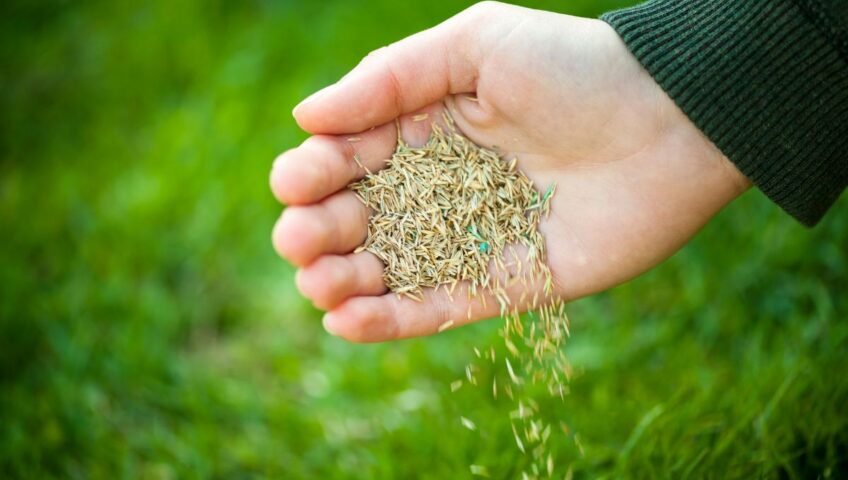The summer heat may still be here, but with October just around the corner, it’s time to start thinking about fall landscaping tasks. Here’s a list of things that your lawn may need to have done in the next six weeks.
Lawn Reseeding/Overseeding
The time for lawn seeding is getting short, so it’s important to complete seeding/overseeding as soon as you can. For cool season grasses, Kentucky bluegrass and tall fescue, late August into mid-September is the best time for seeding. Perennial ryegrass is not recommended for use in Nebraska lawns.
The seeding window is getting smaller, but there is still time to seed. Preparing the seedbed is always a very important first step, whether doing a complete renovation or overseeding. The key to success is seed to soil contact. When purchasing seed, buy from a reputable retailer and look for blue tag certified seed to avoid planting a problem.
Lawns that have recently been seeded or overseeded some damage may be expected on newly germinated lawns if temperatures dipped below 28° F. As cool season grasses, newly germinated Kentucky bluegrass and tall fescue seedlings can tolerate light frost, down to approximately 30-32° F, but hard freeze temperatures below 28° F will likely cause some seedling death if plants are less than 7 days old.
Lilac Leaf Browning
In the last few weeks, many lilacs have suffered severe leaf browning. This is caused by the fungal disease Pseudocercospora. It shows up as brown spots on the leaves, moving from the edge of the leaves inward, sometimes splotchy in appearance. The fungus is favored by moderate summer temperatures and high humidity. It is common when temperatures are around 76 degrees but the infection occurs at least 7 days before any symptoms are seen on the plant.
Because high humidity favors disease development, increasing airflow around and through lilac stems will help reduce disease severity by decreasing leaf wetness time following rain or a heavy dew. Prune affected plants by cutting out 1/3 of stems, removing the largest canes and those canes that are cankered, girdled or completely dead.
The fungus can survive for at least 2 years on plant debris, so fall cleanup of the infected leaves will also help reduce disease pressure next year. Fungicides are not effective at this time on plants already infected. Next year, fungicide should be applied in the spring when the leaves first emerge.
Perennial Weed Control
Fall is the best time to control perennials broadleaf weeds in turf. Fall applications are more effective because weeds are translocating stored energy (and properly applied herbicide) into roots and other underground structures. For the best control, an herbicide should be applied by the end of October. A second application can be made 3 to 4 four weeks after the first if targeted weeds have not been controlled by the initial application. Single applications applied later in fall can still be effective if soil moisture isn’t limited at the time of application, but control may not be evident until spring. Herbicides are most effective when spot applied to actively growing weeds that are not stressed by extreme temperatures, drought, etc.
Fall Lawn/Landscape Clean Up
Some insect pests overwinter in or on overwintering garden debris. For example, Iris borers spend the winter as eggs on old iris leaves and plant debris at the base of iris stalks. Squash vine borers overwinter as cocoons in the ground or on leaf litter, and squash bugs find shelter in the fall under dead leaves, rocks, wood, and other garden debris. As the landscape season winds down, practicing fall sanitation and removing plant debris is an important piece of the management puzzle for reducing serious pest population levels.
As always, we are here to help you with any lawn or landscaping questions you may have. Give us a call anytime!
LibertyLawn@gmail.com / 402.423.0061
3810 Cornhusker Hwy, Lincoln, NE 68504 / PO Box 29442. Lincoln, NE 68529

